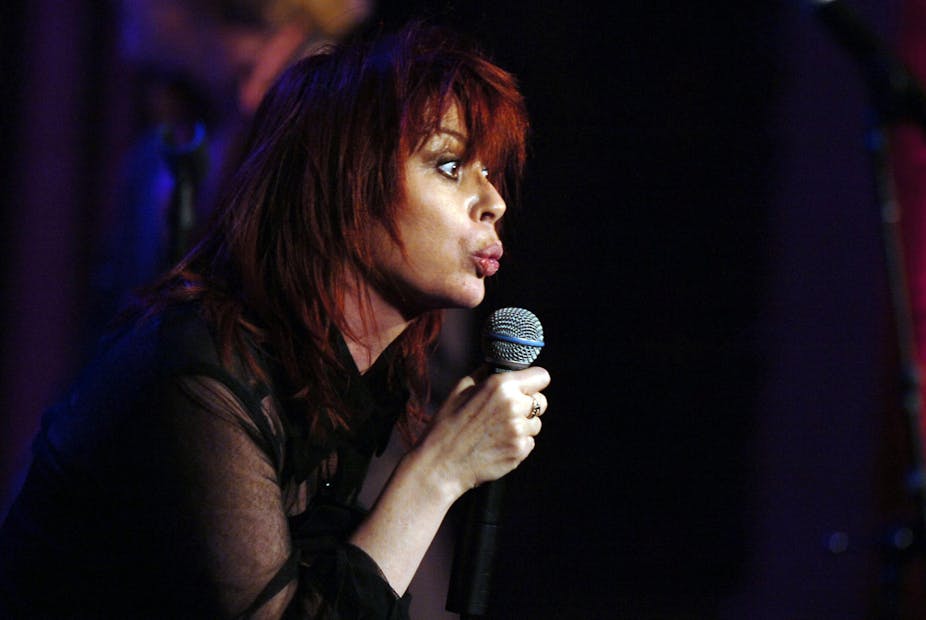When Chrissy Amphlett, lead singer of the iconic Australian rock group The Divinyls, passed away as a result of breast cancer in April last year, it was only a matter of weeks before the question of how to commemorate her was raised.
Journalist Jessica Adams started a petition to have a laneway in the Melbourne CBD named in Amphlett’s honour, and this was quickly signed by more than 7,000 fans, as well as gaining support from industry heavyweights. On Tuesday night, Melbourne City Council unanimously approved the renaming of Corporation Lane 1639, located between Harwood Place and Spring Street off Little Bourke Street (behind the recently closed Palace Theatre where the Divinyls once played) in Melbourne’s CBD.
By this morning fans had already adorned the new Amphlett Lane with chalk murals celebrating the name change.
Amphlett Lane joins ACDC Lane, Paul Hester Walk and the proposed Rowland S. Howard Lane in St Kilda as part of a growing trend in Melbourne to commemorate rock stars through the naming of public places.

This is part of a trend across the western world where popular music is starting to be talked about in terms of heritage, and to be acknowledged in official ways as an important part of the history of nations and cities. This can be seen most clearly in places such as Liverpool, where an industry has grown up around not just The Beatles but the entire music scene in the city.
The benefits of making popular music a part of the story that cities and countries tell about themselves has, in cases like Liverpool, proved to be not just a way of creating a more inclusive version of the past, but a very lucrative project. Melbourne City Council undoubtedly realises this; bringing tourists to the city has always been one of the reasons for establishing Amphlett Lane.
However, in Australia so far the heritagisation of popular music has been done in a very ad hoc way. Chrissy Amphlett has been lucky enough to have a tenacious group of fans who have dedicated a lot of time and effort to raising support for her laneway – but what of artists whose fans are less well equipped to wade through the bureaucratic processes associated with a name change, or who face more conservative officials who still don’t see rock stars as worthy of commemoration?
Even Melbourne only has a few Corporation Lanes left that could be used in this way – most of those remaining are tiny and/ or packed with rubbish bins, hardly a fitting tribute to any public figure. When laneways are no longer an option, what could be used instead? The idea of a series of plaques (similar to those used in the UK) has already been suggested as part of the council debates around naming ACDC Lane. If these were adopted, who would decide what names were worthy to put on them?

These are questions that need to be considered seriously, as the naming and claiming of public space is a highly political act. In Australia, where places have been named for people, we have followed the European trend of naming them for politicians and leaders of military and industry, and these have been for the most part white males.
In this sense, Amphlett Lane is a wonderful new addition to the Australian landscape in that it not only puts our popular music history even more firmly – and literally – on the map as something that is worth taking seriously and celebrating, but does so with reference to a female musician. Women are frequently neglected in history generally, and in popular music history specifically, so keeping Amphlett in the public eye and collective memory in this way speaks to the diversity of our past.
Who has the authority to shape the past will also be worth considering as other ways of commemorating Australian popular music take shape. Calls are coming from a number of places for the establishment of a permanent museum for the preservation and display of Australia’s rock and pop memorabilia, or those relating to specific states.
Music Victoria would like a Hall of Fame established, and the group behind the Amphlett Lane campaign has set up the Australian Music Museum Project. This project has taken the lead from a number of overseas rock museums in making fans central to the music history being constructed, rather than curators or historians.
Giving voices to fans recognises that rock and roll has always been a messy thing, and the type of neat story we often like to construct to understand the past won’t capture what has been important about it. As popular music becomes a part of the story Australia tells about itself we need to keep the messiness, and give as many people a voice as possible.
Putting fans front row and centre is one way of doing this, and the creation of Amphlett Lane is a great step in this direction.

